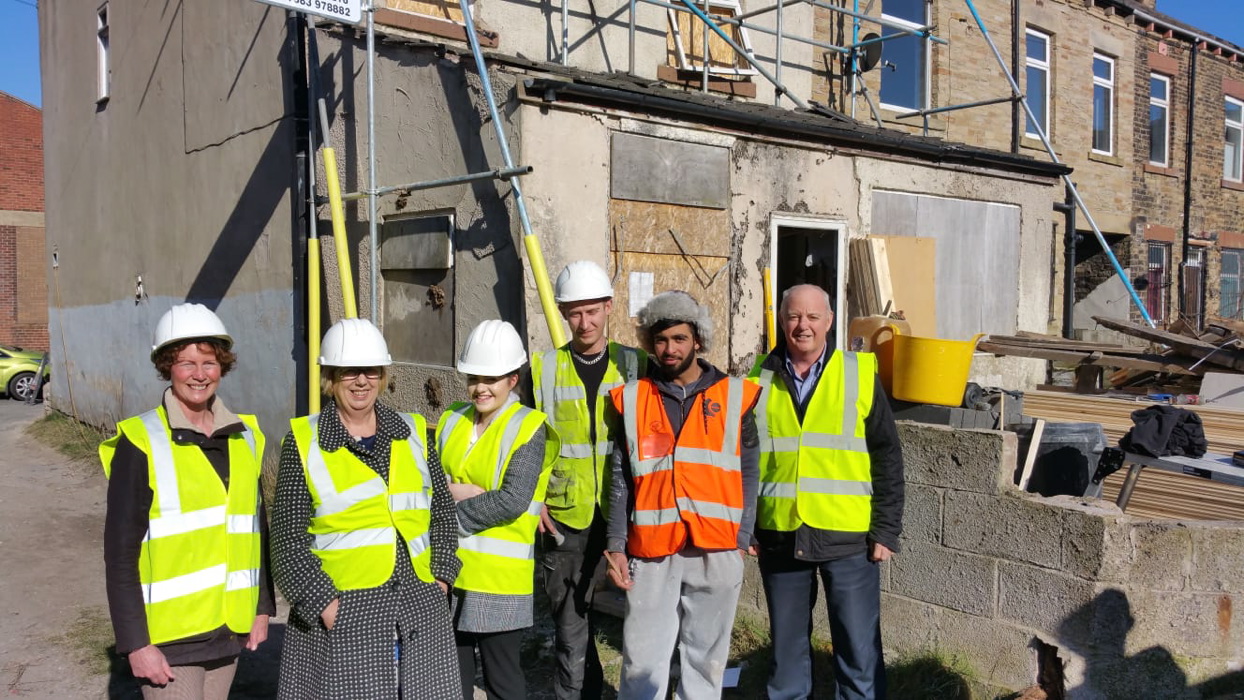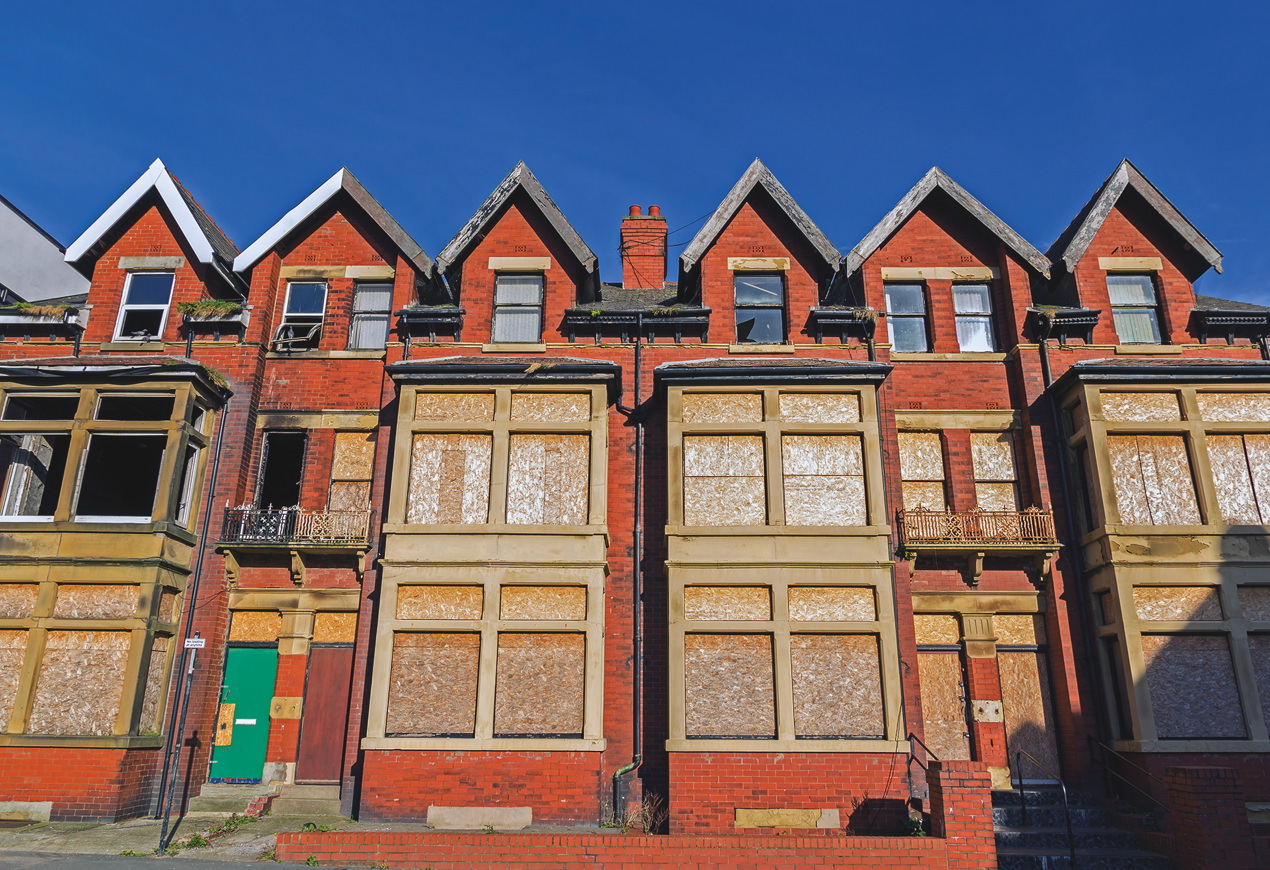Empty promises
With nearly 16,000 people waiting to be housed and as the worst authority for empty properties Bradford Council has had to be innovative in its approach to housing
Properties that stand empty for long periods of time can have a detrimental effect on communities as well as being potentially wasted housing stock that could help with waiting lists.
A report by an online estate agent said that across the country the number of long-term vacant properties topped 200,000, with a collective value of £49 billion. Outside London, the cities with most empty homes were Birmingham, Bradford, Liverpool, Leeds and Sheffield.
The worst authority for empty properties according to this survey it might be, but Bradford has been taking great strides to bring long-term empty homes back into use, and has just announced tough new measures to encourage owners of fallow properties to take action.
Bradford Council set up a dedicated department to tackle the empty homes crisis in 2010, and since then has brought many properties back into use.
David North, the council’s empty homes and loans manager, says: “It has always been acknowledged that there are empty properties in the district and the housing service has had, for some time, dedicated officers working on the reduction of empty homes. However, in 2010, the number of empty homes in the district peaked and the decision was taken to provide additional funding to the housing service to tackle empty homes.”
The council is getting tougher. Owners of houses left empty for five years will pay double council tax
The council decided to raise this funding by hitting owners of houses that had been empty for two or more years with a council tax hike, meaning they paid 150 per cent of the bill as long as the home was empty. Now the council has got even tougher, announcing measures that mean owners of houses left empty for more than five years will pay double rates, and those who have left houses abandoned for 10 years or more will pay 300 per cent.
“First and foremost the issue of empty homes is the wasted housing resource,” says North. “The council is focused on bringing empty homes back into the housing market. However, the more immediate effect on communities is the blight that a deteriorating empty home can have on a street and community.
“In particular, empty homes can attract anti-social behaviour, refuse, fraudulent and criminal activity and they can reduce house prices or the willingness of buyers to move into or invest in a street. It is important to recognise though that not all empty properties are kept in a bad condition. In fact the majority will be looked after and will not be causing an issue to the community.”
But there is also the frustration of so many people waiting to be housed. There are 15,794 people on the housing register in Bradford, although not all are in priority need – some are just seeking alternative housing. But there are 7,800 empty properties in the district, almost 4,500 of which have lain empty for more than six months.
“Of course, as housing professionals we are more than aware of the issue relating to empty homes and of the issues with people needing housing in the district and of the inevitable link that can be made between the two,” says North. “Bringing empty homes back into use undoubtedly contributes towards the provision of housing.”
The council doesn’t have carte blanche to just take these empty properties for social housing use, of course. The priority is encouraging the owners to fix them up, and then dispose of them through sale or rent them out. The imposition of punitive council tax increases is one way of making owners sit up and notice.
The council has forced compulsory purchase orders on some properties, though this is a long, drawn-out legal process that can take anything up to two years. “This is only used as a last resort, where all other forms of assistance and advice have been exhausted and it is clear that the owner is either unwilling to bring the property back into use or is untraceable,” says North. “Even then, the property has to be considered high risk, in a bad condition, causing a blight, attracting anti-social behaviour, accumulating debt to the council. The process is very prescriptive, legally, and can take a considerable time.
“Once the property is in the possession of the council, depending on the nature of the property, we make a decision as to how to dispose of it. We have a number of partners that we can sell directly to – social enterprises, charities – or it is sold, usually in the same condition, on the open market.”
Since 2010, Bradford Council has acquired 27 homes through compulsory purchase and 32 have been voluntarily transferred to the council by the owners. There are 27 other cases going through the legal process. And the council has identified almost 100 properties that it considers “high risk” due to the length of time they have been empty, and is prioritising bringing them back into use. But what happens when they get hold of these properties?

Bradford Council works with charities and social housing organisations such as Centrepoint, Arise and the Bradford Youthbuild Trust to bring these homes back into use, especially as accommodation for young or vulnerable people.
For Bradford Youthbuild Trust in particular, being associated with the empty homes project has a dual benefit – not only are they providing new rental accommodation for people but they are also teaching young people essential building skills.
The trust was established in 2000 and is funded through renting out and selling the properties it acquires. It funnels its money into training young people in Bradford in all levels of construction skills. It owns a training centre, which it also leases out to a local college, and gives trainees on the job training during the refurbishment of its properties.
Russell Wilson, property manager of the trust, says: “When we bring an empty property back into use we use local contractors and expect them to work with us to find jobs for our trainees.”
One of the Youthbuild Trust’s big recent successes involved four properties in the Laisterdyke area, some of which had lain abandoned for more than a decade. According to Wilson, one of the homes was being used as a brothel and another was occupied by squatters and used as a drugs den.
“This block had a significant impact on the quality of life of local residents, especially in terms of criminal behaviour and neighbourhood nuisance. Local people were constantly complaining to the local authority about the state of the properties,” he says.
“The project brought together the public, private and charity sectors to maximise the overall benefit to local people and stakeholders. The refurbishment provided training for unemployed local people and much needed affordable housing. The development is now fully occupied and tenanted. It has brought life back into the area and changed many lives.”
The Youthbuild Trust has also channelled some of the money raised through its housing projects into the support of the Bradford Environmental Education Service, a division of the local YMCA, which works with young people, community groups, schools and businesses – enabling people to make a contribution to their local environment, develop skills and explore nature.
It’s an example of how taking action on empty homes in Bradford has had spin-off effects that go beyond the initial aim of reducing the blight on communities and easing the pressure on housing waiting lists.
And the initiative is also having a positive effect on squeezed council budgets. Increases in council tax on empty homes is expected to bring in
an extra £740,000 over the coming financial year.

Leave a reply
Your email address will not be published.